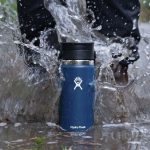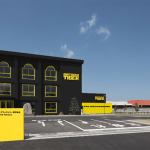Vail Resorts, Inc. said net income for the fourth quarter ended July 31, 2010 was was $868.6 million compared to $977.0 million in the prior year, an 11.1% decrease. Retail/rental operations were also down 2.1% in the quarter, although on a fiscal basis, the segment saw an increase of $7.4 million, or 5.0%.
The uptick was primarily due to higher retail sales and rental volumes at Vail, Beaver Creek and Breckenridge mountain resort stores and San Francisco Bay area stores as retail/rental revenue increased 8.1% for the 2009/2010 ski season compared to the prior season.
as previously stated, the increase was partially offset by declines in retail sales for both the first and fourth quarters of Fiscal 2010 of 4.0% and 2.1%, respectively, compared to the same periods in the prior year due primarily to a decline in sales volumes at mountain resort stores not proximate to our ski resorts. Retail/rental revenue was particularly strong in the second half of the ski season which was bolstered by increased visitation to our resorts and higher guest spend.
Highlights
* Mountain segment net revenue increased by 3.9% to $638.5 million for Fiscal 2010 and total skier visitation improved by 2.5% for the fiscal year. Resort revenue increased 2.1%.
* Mountain Reported EBITDA improved by $19.6 million, or 12.0%, and Resort Reported EBITDA (which includes the company's Mountain and Lodging segments) increased by $15.3 million, or 8.9%, for the 2010 fiscal year.
* Net income attributable to Vail Resorts, Inc. of $30.4 million for the 2010 fiscal year declined 37.9% primarily due to the timing of real estate closings.
Commenting on the company's Fiscal 2010 results, Rob Katz, Chief Executive Officer said, “I am very pleased with the performance that we delivered for Fiscal 2010. Even with snowfall at historically low levels and the slow recovery in consumer spending, we were able to deliver growth in all key segments in our Mountain division: skier visits, lift ticket revenue, dining, ski school and retail/rental.”
Katz went on, saying, “The improvements were driven by strengthening destination visitation and guest spending patterns, which accelerated through the spring break and Easter holiday periods. Over the course of the 2009/2010 ski season, we saw consistently improving performance over the prior year in all of our key Mountain segment metrics leading to 12.0% growth in Mountain Reported EBITDA on a 3.9% increase in revenue.”
Lift ticket revenue increased 4.6%, with season pass revenue up 6.5%. Total skier visitation increased 2.5% for the year led by the company's Heavenly resort, which experienced a 10.7% increase in visitation, while overall visitation for our four Colorado resorts increased by 1.2%. Vail's ski school business experienced the largest revenue increase for an ancillary business for the year, up 8.2%.
Commenting on the balance sheet, Katz noted that, “We ended the year with Net Debt at 2.8x Total Reported EBITDA, even after self-funding two large real estate projects, investing in our mountain assets, repurchasing stock, and completing acquisitions of Mountain News and the remaining noncontrolling interest in SSV.”
Total Performance
* Total net revenue was $868.6 million for Fiscal 2010 compared to $977.0 million in the prior year, an 11.1% decrease.
* Net income attributable to Vail Resorts, Inc. was $30.4 million, or 83 cents per diluted share, for Fiscal 2010 compared to net income attributable to Vail Resorts, Inc. of $49.0 million, or $1.33 per diluted share, in the prior year.
* The effective tax rate for Fiscal 2010 was 33.5% compared to the effective tax rate for the prior year of 37.7%. The current year's effective tax rate was favorably impacted by the company's purchase of the remaining noncontrolling interest in SSV, the company's retail/rental business on April 30, 2010.
Outlook and Fiscal Year 2011 Guidance
“As we prepare for the upcoming ski season, there are several encouraging signs,” commented Katz. “First, our sales of season passes have already improved significantly over the course of the summer and into the early fall selling period. We are pleased to report that through September 19, 2010, our season pass sales are down only 1% in units and sales, a substantial improvement from the 14% and 16%, respective declines we reported in June 2010. This recent trend supports our statement made in June that we believed the early season decline was due to an unusual timing shift in the prior year selling period and that we would more than make up for that shortfall in the fall of 2010. We are now just past the mid-point of pass sales, based on historical trends, and we look forward to continuing to sell all of our pass products into the late fall.”
Katz continued, “Second, although it is still early in the bookings cycle, (less than 15% of winter season bookings are historically made by this time), most booking indicators at our resorts are up in both room nights and revenue over the prior year at the same point in time.
“Third, sales at our retail outlets during our annual Labor Day sales events exceeded the prior year, indicating that Front Range skiers are excited about the arrival of this coming ski season,” said Katz.
“And fourth, we saw strong summer visitation at our mountain resorts, which indicates that our guests' propensity to travel and recreate in the spring carried through the summer, despite a volatile global economic environment. With the momentum from all of these indicators aligning with the favorable trends we exited the 2009/2010 ski season with, we are optimistic about the upcoming season,” Katz conluded.
Commenting on Fiscal 2011 guidance, Katz said, “We would like to announce our guidance for Fiscal 2011 ending July 31, 2011. With the ski season not yet having begun, our visibility at this point is limited. However, we are optimistic for the coming season given the most recent trends in bookings and season pass sales and our expectation to return to more traditional price increases in lift tickets and ancillary products. Based on our current estimates, our Fiscal 2011 guidance range anticipates growth in year-over-year Resort Reported EBITDA of 7%-13%, to a range of $200-$210 million.”
The following table reflects the forecasted guidance range for the company's fiscal year ending July 31, 2011, for Reported EBITDA (after stock-based compensation expense) and reconciles such Reported EBITDA guidance to net income guidance for Fiscal 2011.
Vail Resorts, Inc. | ||||||||||
Consolidated Statements of Operations | ||||||||||
(In thousands, except per share amounts) | ||||||||||
(Unaudited) | ||||||||||
Three Months Ended | ||||||||||
July 31, | ||||||||||
2010 | 2009 | |||||||||
Net revenue: | ||||||||||
Mountain | $ | 36,100 | $ | 36,150 | ||||||
Lodging | 44,222 | 44,942 | ||||||||
Real estate | 56,768 | 20,836 | ||||||||
Total net revenue | 137,090 | 101,928 | ||||||||
Segment operating expense: | ||||||||||
Mountain | 69,077 | 68,616 | ||||||||
Lodging | 47,035 | 46,899 | ||||||||
Real estate | 50,417 | 17,056 | ||||||||
Total segment operating expense | 166,529 | 132,571 | ||||||||
Other operating expense: | ||||||||||
Depreciation and amortization | (27,870) | (27,115) | ||||||||
Loss on disposal of fixed assets, net | (532) | (256) | ||||||||
Loss from operations | (57,841) | (58,014) | ||||||||
Mountain equity investment income (loss), net | 259 | (949) | ||||||||
Investment (expense) income | (118) | 365 | ||||||||
Interest expense, net | (4,859) | (5,816) | ||||||||
Loss before income taxes | (62,559) | (64,414) | ||||||||
Benefit for income taxes | 20,375 | 23,096 | ||||||||
Net loss | (42,184) | (41,318) | ||||||||
Net loss attributable to noncontrolling interests | 263 | 2,588 | ||||||||
Net loss attributable to Vail Resorts, Inc. | $ | (41,921) | $ | (38,730) | ||||||
Per share amounts: | ||||||||||
Basic net loss share attributable to Vail Resorts, Inc. | $ | (1.16) | $ | (1.07) | ||||||















